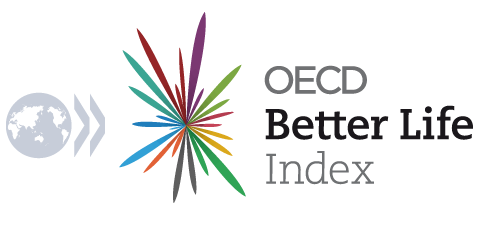How’s Life? – Focusing on people
Martine Durand, Chief Statistician and Director of the OECD Statistics Directorate, presents the second edition of How’s Life?. Part of the OECD Better Life Initiative, this report paints a comprehensive picture of well-being in OECD countries and other major economies and contains in-depth studies cross-cutting issues in well-being such as gender differences in well-being, job quality and well-being in the wake of the crisis.
Measuring better lives has become even more important today, as many of our economies and societies have been stricken by the global financial crisis. Understanding how people’s lives have been affected and designing the best strategies to help those who have suffered the most requires looking well beyond the impact of the crisis on economic production and financial markets.

Many workers have lost their jobs since the start of the crisis in 2007 and many households have registered stagnating or declining levels of income and wealth. Today, there are nearly 15 million more unemployed people in the OECD area than before the crisis, and the number of people out of a job for more than a year has reached 16 million. Meanwhile, between 2007 and 2010, relative income poverty rose in most OECD countries, especially among children and young people. Rising economic insecurity and financial strain have particularly hit low-income and low-educated households.The global financial crisis has seriously affected economic well-being
Trust in institutions has weakened
Other aspects of people’s well-being have also suffered during the crisis. Life satisfaction fell considerably in the countries most severely hit, such as Greece, Italy, and Spain. In these countries more people reported experiencing high levels of stress and worry. Countries’ political capital has been severely undermined, as today only 40% of citizens in the OECD trust their national governments – the lowest level since 2006. And in countries most affected by the crisis, only between one and three citizens out of ten trust their governments, a ratio that has more than halved since the start of the crisis.
New forms of solidarity and engagement have emerged
In some countries, responses to the crisis went beyond public policy and also came from local communities, in the form of higher interpersonal solidarity and different forms of civic participation. While people have found it more difficult to provide financial help, an increasing number report having provided non-financial support to others, and having volunteered their time to help those in need in their community. Families have also been a source of support, both financial and in-kind, and have provided an important safety net, for instance to young people who had difficulty finding a job.
Well-being indicators offer new insights for policy making
Well-being indicators can provide a new and wider perspective to policy-makers in the areas that matter to people. Some of these areas have long been on their radar screen, such as jobs, health or education. Other individual and household-level indicators and their distribution across population groups can offer new insights on people’s quality of life. The updated edition of How’s Life? explores in some detail two well-being issues that may offer new food for thought for policy making: gender gaps in well-being and well-being in the workplace.
Can women and men have it all?
The question of how and why well-being varies across population groups is fundamental to design better targeted and more effective policies. While much progress on gender equality has been achieved over the past decades, in a number of countries, gender remains an important determinant of well-being inequality. But contrary to the usual picture that captures economic conditions only, the gender gap is not always just a women’s issue. For instance, women live longer than men on average in the OECD and they are often more educated. However, women report a lower health status, have worse job prospects and fewer networks to rely on when looking for a job. Women also experience negative feelings more often than men.
Well-being in the workplace: The importance of quality jobs
For many years, policy has mainly focused on providing job opportunities and ensuring that people who wanted to work could find a job. However, most people spend a large part of their lives working and what happens in the workplace is an essential determinant of overall well-being. Having a good or quality job does not just mean receiving good salaries or having dynamic careers; it also means working in an environment that is conducive to personal accomplishment and where people are committed. People’s engagement and high sense of well-being at work depend a lot on whether they have autonomy in their job and are given well-defined work objectives. Respectful and supportive management practices and support from colleagues are also important. When jobs and workplaces combine these factors, people are more apt to manage work pressure and emotionally demanding jobs, and they also tend to be healthier and more productive.
Focusing on what matters to people, and improving existing indicators or developing new ones to measure well-being and progress, is the way ahead to achieve better lives, today and tomorrow.
Find out more:
How’s Life? 2013 is available to read free on-line on: www.oecd.org/howslife,
and, directly on OECD iLibrary: oe.cd/mr
- Test your knowledge of who’s living the better life with our quiz: oecdinsights.org/2013/11/05/hows-life-find-out-here

Comments